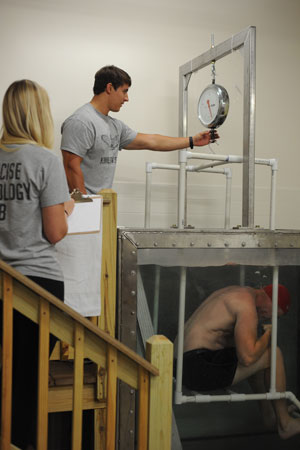Exercise Science Physiology Laboratory
Our Exercise Science Physiology Laboratory is a well-equipped facility where our students have access to a host of equipment that allows for the assessment of body composition, muscular fitness, neuromuscular function, aerobic capacity, metabolic function, and other relevant physical performance and health outcomes.

Parvo Metabolic Carts & Woodway Treadmills
Three Parvo Medics TrueOne 2400 metabolic carts are used to quantify oxygen consumption, energy expenditure, and substrate (carbohydrate and fat) oxidation. Our laboratory is equipped with two Woodway treadmills—these treadmills are durable and versatile, allowing exercise in motorized and non-motorized modes. 
Squat Racks & Tendo Power Analyzers
The squat racks are utilized to demonstrate practical skills during the laboratory sections of our Strength and Conditioning course. The Tendo Power Analyzers allow for the measurement of velocity and power during applied movements such a squat, countermovement jump, or chair-rise task.
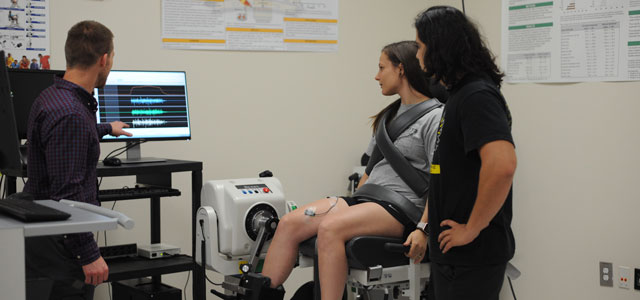
Biodex System Isokinetic Dynamometer & Delsys Electromyography (EMG) System
The dynamometer allows for measurements of strength, velocity, and joint angle for most joints of the body. EMG is commonly used in conjunction with the dynamometer in order to assess the timing and amplitude of muscle activation during muscle contraction.

Microbiopsy
Muscle Microbiopsy, or fine-needle biopsy, is a technique used for the collection of skeletal muscle tissue. Microbiopsies of human skeletal muscle are increasingly adopted by physiologists for a variety of experimental assays given the reduced invasiveness compared to the classic Bergstrom biopsy technique. 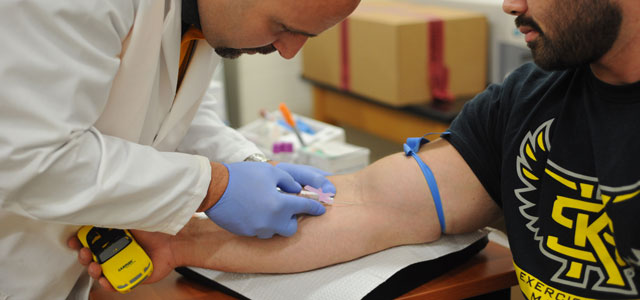
Venipuncture
Blood specimens are collected by individuals trained in phlebotomy for subsequent laboratory testing. Common assessments in our laboratory include insulin, glucose, metabolic panels, creatine kinase, lactate, C-terminal agrin, testosterone, cortisol, human growth hormone, markers of oxidative stress, leptin, and ghrelin.

Air Displacement Plethysmography
The COSMED BOD POD enables for the measurement of body composition parameters via measurement of air displacement. 
Woodway Force
The Woodway Force is a non-motorized, electromagnetically braked treadmill capable of providing 15–150 pounds of resistance. Gait analysis parameters and a host of performance indices can be measured using this device. 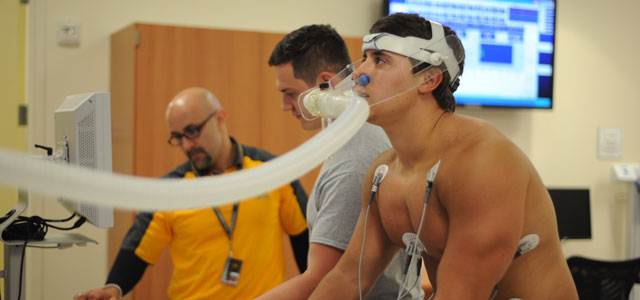
Electrocardiography (ECG)
ECG measures the electrical activity of the heart, and is used to study and detect heart problems resulting from heart disease, such as heart attacks, arrhythmias, or irregular heart beats.

1080 Sprint
A portable, cable-resistance device that uses a servo motor to modulate resistance load between 1–15 kilograms. In addition, the software obtains performance data such as force, velocity, and power during the movement. 
Heart Rate Variability
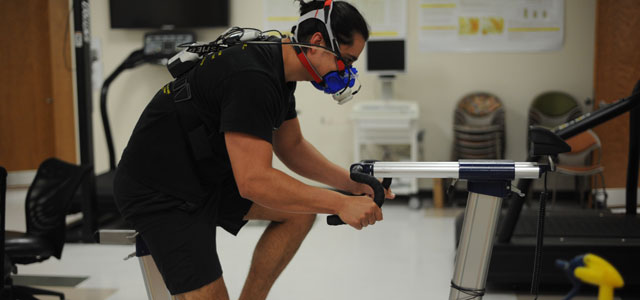
COSMED K5 Wearable Metabolic System

Ultrasound
Ultrasound is used for obtaining visceral fat, as well as morphological and architectural measures of skeletal muscle and tendons such as cross-sectional area or pennation angle.









